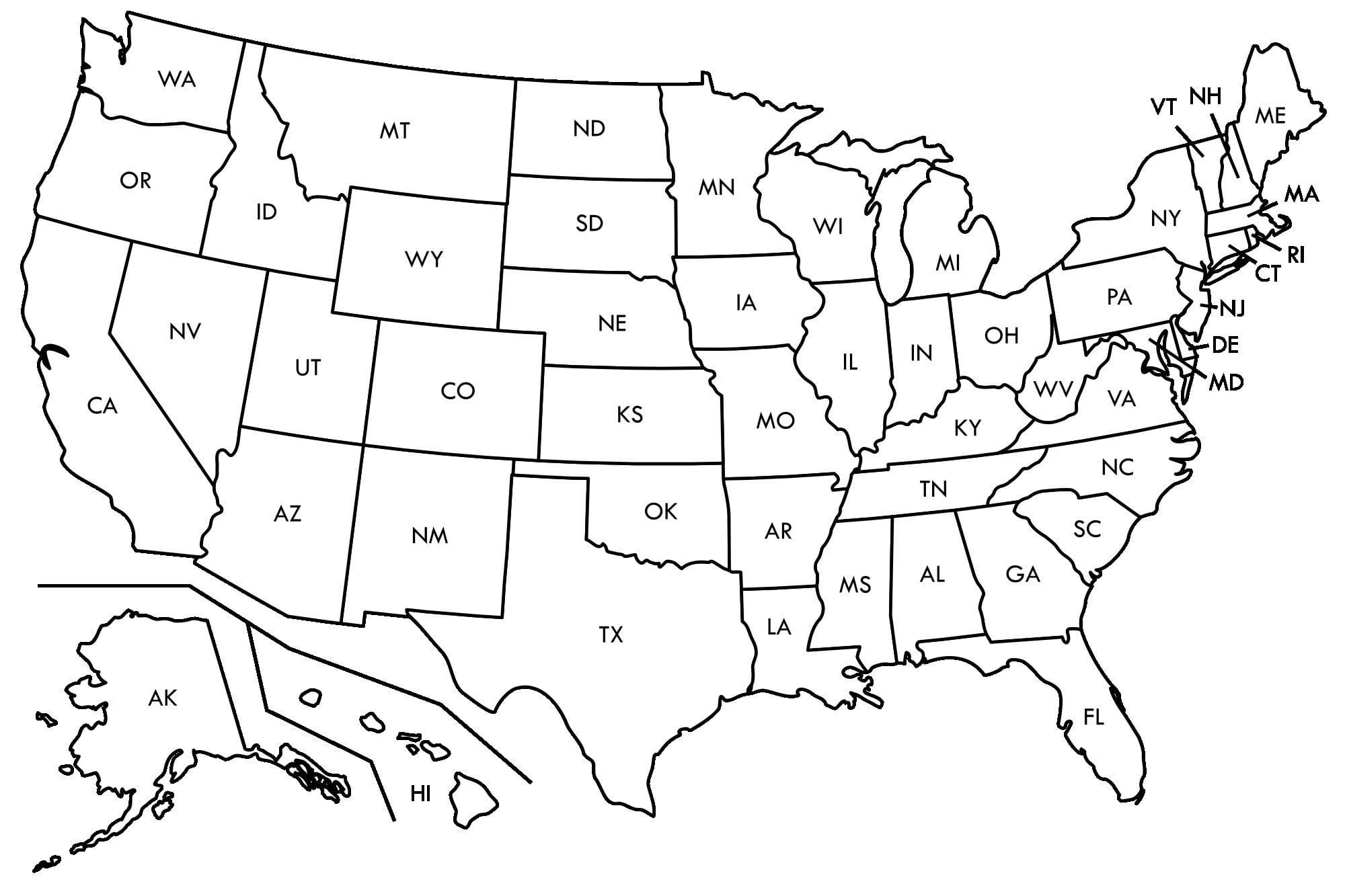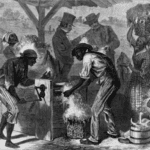Unveiling the Significance of Sectionalism Maps in US History:
Imagine a map of the United States in the 1800s, but instead of just states and cities, it shows you the invisible lines of tension that were pulling the nation apart. These are sectionalism maps, and they’re like X-rays that reveal the deeply rooted disagreements that led to one of the most dramatic periods in American history – the Civil War.
Sectionalism maps weren’t just about showing where mountains were or which rivers flowed where. They went deeper, highlighting the things that really made different parts of the country tick. For example, you could see at a glance how the North was humming with factories and industry, while the South was all about agriculture, with vast fields of cotton relying on enslaved labor.
But it wasn’t just about different ways of life. Sectionalism maps also acted like heat maps, showing where political opinions were running hot. They could pinpoint which states were firmly against slavery and which were fiercely defending it. This clash of viewpoints, starkly illustrated on the maps, fueled the political firestorms of the time.
Think of it like this: if each state was a character in a drama, sectionalism maps would be the stage directions, showing us who was at odds with whom and why. They reveal the tension building up, act by act, until ultimately, the nation reached its breaking point with the Civil War.
How Did Sectionalism Maps Change Over Time?
As the United States grew and changed, sectionalism maps, like snapshots of America’s personality at different points in time, started looking pretty different! They act like a family photo album, showing how regions drifted apart in their thinking about culture, money matters, and what they believed in. This family feud even led to the Civil War. Sadly, sometimes families fight, and in this case, it was a country divided within itself.
Think about it: as the United States expanded westward, new territories popped up, and people argued about whether slavery should be allowed there. Boom! Instant tension captured on those maps. The balance of power shifted between the North and the South. This wasn’t just about geography; it was about deeply held beliefs and ways of life.
You see, the North was becoming an industrial powerhouse, with factories popping up like mushrooms. They relied on paid workers, not enslaved people. On the other hand, the South held onto its agricultural roots, with vast plantations depending on enslaved labor for their crops like cotton. These maps show that stark contrast, visually highlighting the growing divide.
The maps are like puzzle pieces, helping us understand the bigger picture of American history. They remind us that conflicts, even national ones, often stem from deeper issues brewing beneath the surface.
Types of Sectionalism Maps and What They Reveal
Let’s dive into how these sectionalism maps actually showed the growing divide in the US back in the 1800s. Imagine these maps like snapshots, each one giving us a glimpse into a different aspect of American life during a time of major change and, honestly, growing tension.
Key Takeaways:
- Think of sectionalism maps like puzzle pieces. When you put them together, you start to see the bigger picture of why the North and South were on such different paths. They show us the economic gaps, like the industrial North versus the agricultural South, which fueled arguments about taxes and, of course, slavery.
- Imagine these maps as heat maps of political beliefs. They show how different areas sided with certain political parties, reflecting their own local interests and ideas.
- These maps go beyond politics and economics – they also highlight the social differences that were simmering beneath the surface. They show us different attitudes toward slavery, education, and even how people felt about social change movements.
- Ever wonder how westward expansion changed America? Sectionalism maps show us that, too. They track population density and migration, revealing how the country’s growth played a role in shaping those distinct regional identities.
- Perhaps most importantly, these maps lay bare the stark reality of slavery in America. They show us where enslaved people were concentrated, how ownership varied, and how the institution of slavery spread. It’s a stark visual reminder of the issue that ultimately tore the nation apart during the Civil War.
Let’s break down the different types of sectionalism maps and what they can tell us:
1. Population Density & Demographics Maps: Imagine these maps as a census from the past. They show us:
- Where people were living, broken down by things like ethnicity and whether they lived in cities or the countryside.
- How population changes, like people moving west, created friction and new identities. This often led to disagreements over land, resources, and, you guessed it, slavery.
2. Economic Maps: Think of these maps as a snapshot of the nation’s wallet. They reveal:
- The spread of industries, where crops were grown, major transportation lines, and the centers of finance.
- How economic differences between regions fueled sectionalism. For example, the industrialized North and the agricultural South were often at odds, particularly when it came to taxes on goods.
3. Political Maps: These maps are like looking at an election night map from the 1800s. They show:
- Election outcomes, how people voted, where political parties were strongest, and who had the power in government.
- How political views were often divided along geographic lines, usually mirroring the economic and social interests of those regions.
4. Slavery Maps: Perhaps the most sobering of all, these maps illustrate the stark reality of slavery:
- They show where enslaved populations were concentrated, different patterns of slave ownership, and how the institution of slavery cast a long shadow across the South.
- These maps drive home just how central slavery was to the rise of sectionalism. It became the defining issue between the North and South, ultimately leading to the Civil War.
By carefully examining these different types of sectionalism maps, we gain a more complete understanding of the complex factors that shaped America’s past. Even more importantly, they offer valuable insights into how those historical divisions continue to influence our social and political landscape today. They remind us that history isn’t just something in textbooks; it’s woven into the very fabric of our nation.
How to Analyze a Sectionalism Map for Historical Insights
Now that we’ve laid the groundwork, let’s dive into the nitty-gritty of how to actually analyze these maps and unlock the stories they hold. Think of it like detective work – you’re piecing together clues to understand a past mystery!
1. Get the Lay of the Land: Title and Legend
Before you even look at the map itself, spend a moment with its title and legend. They’re like the introduction and cast list rolled into one. The title tells you what the map is trying to show, like “Distribution of Slave Populations in 1860.” The legend, meanwhile, is your decoder ring, explaining what all those different symbols and colors represent.
2. Spot the Landmarks: Key Features
With the legend as your guide, start exploring the map! Pay attention to:
- Nature’s Influence: Mountains, rivers, and coastlines weren’t just pretty backdrops—they played a huge role in where people settled and what they did for a living. Was a region more suited to farming, fishing, or industry? The geography often holds the answer.
- Symbols and Shades: These are the map’s way of showing you data. Are there lots of little factories clustered in one area? Does the color get darker to show a higher population density? Each symbol and color variation tells you something important.
- Spread and Concentration: Where are things grouped together, and where are they spread out? This can offer clues about a region’s economy – for example, maybe factories are concentrated where coal is plentiful. It can also hint at political leanings— perhaps areas with more urban centers leaned towards one party, while rural areas favored another.
3. Connect the Dots: Analyzing Patterns
Now comes the fun part—finding the connections!
- Comparing and Contrasting: How does life, as depicted on the map, differ from one region to another? Was one part of the country heavily industrialized while another relied on agriculture? Did different regions have vastly different proportions of enslaved people?
- Cause and Effect: Think about how those differences might have contributed to the growing tensions between North and South. For instance, a reliance on enslaved labor in one region might have fueled resistance to abolition in another.
4. Reading Between the Lines: Interpreting the Data
It’s time to put your detective hat on! Based on the patterns you’ve observed, what conclusions can you draw about the causes and consequences of sectionalism?
- The Big Picture: How did these regional differences contribute to the climate that eventually led to the Civil War?
- Specific Events: Think about key events like the Missouri Compromise or the Kansas-Nebraska Act. How do these events, and the divisions they highlight, connect to the patterns you see on the map?
5. Putting it All Together: Contextualizing Your Findings
Remember, a map is just one piece of the puzzle. To get the full picture, you need to connect your findings to the wider world of history.
- The Human Element: Read firsthand accounts from people who lived in different regions during this time. How did their experiences reflect the divisions you see on the map?
- Beyond the Map: Explore other primary sources, like speeches, political cartoons, and photographs, to see how they support or challenge your interpretations.
Keep in Mind:
History is rarely black and white. As you analyze sectionalism maps, be open to different perspectives and interpretations. What might the map be missing? Are there other factors that could help explain the patterns you observe? The more you explore, the richer your understanding of this complex period will become!
Sectionalism Maps – Resources for Further Exploration
We’ve already talked about how important sectionalism maps are, but let’s dive even deeper into what makes them so fascinating and insightful. These maps aren’t just static pictures; they’re like snapshots of a nation on the verge of colossal change.
Think of them as puzzle pieces. Each map, with its specific focus – whether it’s the spread of railroads or the concentration of factories – helps us understand the bigger picture of why tensions were so high in the 19th century. For example, seeing a map of where railroads were mostly located might make you think, “Hmm, that lines up pretty closely with the more industrialized North.” And you’d be right! That kind of connection is what makes these maps so revealing.
It’s easy to simplify the story of sectionalism as just the North versus the South. But sectionalism maps show us it was much more nuanced than that. They bring to light the role of the West, a region with its own goals and anxieties. The West’s stance on issues like slavery and expansion wasn’t always clear-cut, which added another layer of complexity to the sectional puzzle.
What’s really striking is how these maps illustrate the lead-up to the Civil War. It’s like watching a storm gather force. When you see the stark contrast on a map showing slave states versus free states, or the concentration of industry in the North, you begin to grasp the magnitude of the disagreements that ultimately led to war.
Exploring sectionalism maps is like going on a historical treasure hunt. They encourage us to ask questions, challenge assumptions, and consider multiple perspectives.
For further exploration, you can delve into:
- The geopolitical history of the ancient region of ancient Mesopotamia, including the discovery of the land’s first cities, unfolding civilizations, and the conflicts and alliances that shaped history.
- The life and legacy of the Chechen separatist leader, Shamil Basayev, a key figure in the First and Second Chechen Wars.
As we explore these maps and learn from the voices of the past, we gain a deeper understanding not just of history, but of the forces that continue to shape our world today.












